Progress towards meeting the MDGs for women and girls

Goal 1 | Goal 2 | Goal 3 | Goal 4 | Goal 5 | Goal 6 | Goal 7 | Goal 8
UN Women position paper for a stand-alone gender goal
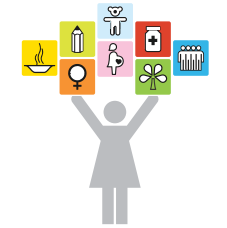
Since their adoption more than 13 years ago, significant and substantial progress has been made in meeting many of the eight Millennium Development Goals, including visible improvements in all health areas as well as primary education, and halving the number of people living in extreme poverty. However, progress is uneven, particularly for women and girls, and in many areas far from sufficient.
Find out more about how women and girls are faring in progress on each goal, and UN Women efforts towards meeting the MDGs by the end of 2015.
MDG 1 – Targets include:
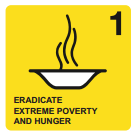
- Halve, between 1990 and 2015, the proportion of people whose income is less than $1 a day
- Achieve full and productive employment and decent work for all, including women and young people
- Halve, between 1990 and 2015, the proportion of people who suffer from hunger
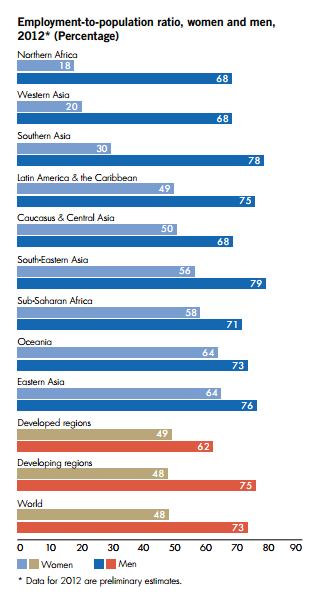
Source: The Millennium Development Goals Report 2013 p. 8
Where are we?
According to the Millennium Development Goals Report 2013, the world has reached the poverty reduction target five years ahead of schedule. In developing regions, the proportion of people living on less than USD $1.25 a day fell from 47 per cent in 1990 to 22 per cent in 2010. Extreme poverty is also falling in every region.
Nevertheless, the gender gap in employment persists, with a 24.8 percentage point difference between men and women in the employment-to-population ratio in 2012.
UN Women’s efforts:
UN Women works to support women’s fundamental role in food security, as the cornerstones of food production and utilization. With more equitable distribution of assets, such as credit, improved seeds and fertilizer, and information and technology, women can achieve significantly higher agricultural productivity.
UN Women also works to eliminate legal restrictions to women’s economic empowerment (such as land and inheritance rights, rights to access credit, ensuring safer migration, etc.) in order to address feminized poverty.
Efforts focus on guaranteeing equal social protection and employment rights for all, whether in the formal or informal economy. UN Women also helps expand paid work opportunities for women, which often ushers shifts in gender relations, greater sense of self-worth and societal respect, a say in critical life choices such as postponing the age of marriage, a greater role in household decision-making and ability to speak out against abuse.
On the ground:
Sowing seeds, reaping income and independence, in Timor-Leste
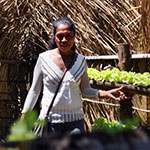
Through self-help groups, grants and gardens, widows, single moms, and survivors of violence are gaining economic independence in rural Timor-Leste. Read more »
Women’s cooperatives changing lives and lands in Upper Egypt
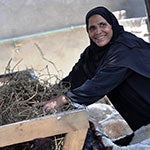
Changing the landscape with all-women worksites in India
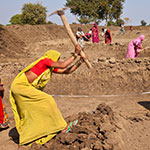
Read more »
MDG 2
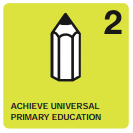
Target:
Ensure that, by 2015, children everywhere, boys and girls alike, will be able to complete a full course of primary schooling.
Where are we?
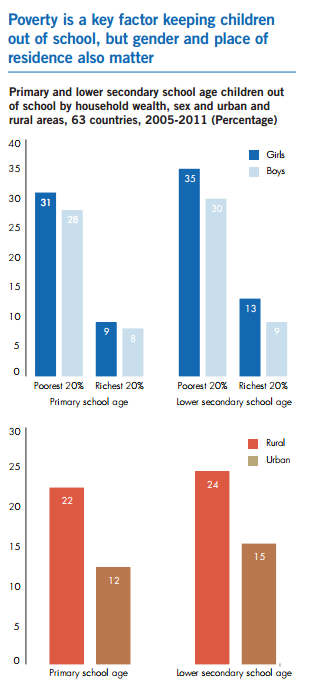
Enrolment in primary education in developing regions reached 90 per cent in 2011, up from 82 per cent in 1999, which means more children than ever are attending primary school. But even as countries with the toughest challenges have advanced, progress on primary school enrolment has slowed since 2004, dimming hopes for achieving universal primary education by 2015.
Across 63 developing countries, girls were more likely to be out of school than boys among both primary and lower secondary age groups. The gender gap in school attendance widens in lower secondary education, even for girls living in better-off households.
UN Women’s efforts:
UN Women focuses action on girls’ school completion rates and improving school conditions for girls, i.e. the environment that makes it conducive for girls to attend schools. From making roads and public transport safer through the Safe Cities Initiative, to addressing the lack of female teachers as role models, to the lack of separate sanitation facilities, and school fees continuing to be deciding factors for whether a girl goes to school, UN Women works to focus on these issues.
Reports show mothers with at least a few years of formal education are considerably more likely to send their children to school. UN Women works to advance women’s empowerment through education and economic opportunities, which facilitate greater decision-making by women in their household, including the decision to send children to school. UN Women also works on campaigns that address attitudes and behaviours, including concerns about female modesty, safety, and the lack of economic returns to girls’ education, factors which often hamper girls’ school attendance.
On the ground:
In Afghanistan, women and girls strive to get an education
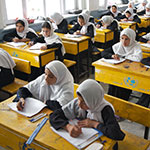
In a country where education for all remains a challenge, UN Women is supporting efforts to reach women and girls through English classes and trainings in computer skills. Read more »

At a school near the town of Arusha, 86 girls –many of whom would otherwise have been married or subjected to FGM– have received scholarships with full board to ensure they complete a minimum level of education. Read more »
Giving young children access to school and moms a chance to find jobs in rural Moldova

The Hincauti community in northern Moldova is one of several where UNDP and UN Women have teamed up to expand a school and improve its heating system, creating jobs and enabling dozens of preschoolers to go to kindergarten. Read more »
MDG3
This the overarching gender equality goal, which encompasses parity in education, political participation, and economic empowerment
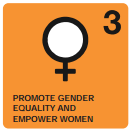
Target: Eliminate gender disparity in primary and secondary education, preferably by 2005, and in all levels of education no later than 2015
Indicators: These include the share of women in wage employment in the non-agricultural sector and the proportion of seats held by women in national parliament.
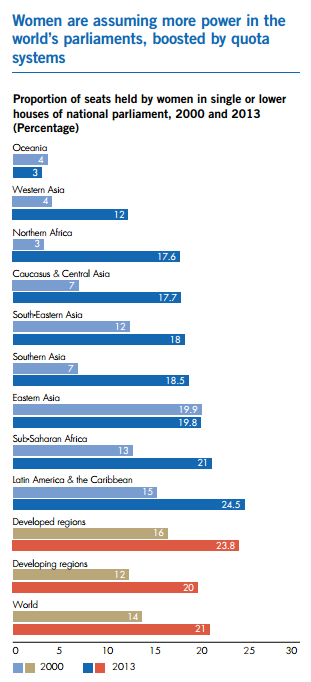
Where are we?
Gender parity in schooling worldwide is closest to being achieved at the primary level; however, only 2 out of 130 countries have achieved that target at all levels of education.
Globally, 40 out of 100 wage-earning jobs in the non-agricultural sector are held by women. But women still enter the labour market on an unequal basis to men, even after accounting for educational background and skills.
As of October 2013, women were 21.8 per cent of parliamentarians in single or lower houses and 19.4 per cent of Senate or upper houses, up from 12 per cent and 10.1 per cent in January 1997, respectively. At the pace witnessed during the last 15 years, it will take nearly 40 years to reach the parity zone in parliaments.
According to the Secretary-General's pre-CSW report "Challenges and achievements in the implementation of the Millennium Development Goals for women and girls", while the three indicators under Goal 3 reflect important dimensions of gender inequality, the narrow focus of Goal 3 fails to address such critical issues as violence against women, inequalities in the division of unpaid care work, women’s limited access to assets, violations of women’s and girls’ sexual and reproductive health and rights, and their unequal participation in private and public decision-making beyond national parliaments. For countries where data are available, women spend on average roughly twice as much or more time than men on unpaid domestic and care work. The report stresses that unless all dimensions of gender inequality are addressed, the overall Millennium Development Goal of gender equality and women’s empowerment cannot be achieved.
UN Women’s efforts:
UN Women works with partners to promote the education of girls and women and overcome barriers to schooling for girls.
Advancing women’s political participation and leadership and economic empowerment are two of the central goals of UN Women. This ranges from initiatives to get more women on the ballot as well as getting more women to the ballot. Boosting proportional representation to increasing the number of women in politics, to more transparent political party selection, training of female candidates and getting more women to cast their votes, are part of the efforts.
In countries around the world, women in politics are strengthening the credibility of democracies through their participation, reinvigorating political accountability, and contributing to improved efficiency in policymaking through bringing their diverse perspectives. In India for instance, in areas with female-led local councils the number of drinking water projects was 62 per cent higher than in those with male-led councils, while in Norway, evidence shows a direct relationship between the number of women in municipal councils and childcare coverage they enacted.
UN Women works to enact and implement equal economic rights for all. Legislation on equal pay for equal work, better access to employment opportunities, equality in hiring and promotions, leave and unemployment benefits, freedom from sexual harassment in the workplace, and other critical rights are increasingly being legislated. But serous lag in implementation of the laws continues to constrain women’s equality and empowerment.
On the ground:
Tunisia’s new Constitution: a breakthrough for women’s rights

Following the revolution and months of protests starting in 2011, Tunisia’s Constituent Assembly adopted a new Constitution on 26 January 2014, considered a harbinger of change for gender equality in the Arab States. Read more »
Domestic workers’ rights move closer to becoming reality worldwide

A look at how Governments, unions and the private sector supported by UN Women are working towards ensuring that this female-dominated profession is regulated and worker’s rights are protected. Read more »
Cameroon elections catapult women, more than doubling their representation in the National Assembly
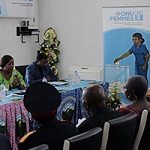
This unprecedented increase, bringing the proportion of women in the National Assembly to 31 per cent, a result of synergy between actors, adoption of an Electoral Code and involvement of a gender expert. Read more »
MDG 4
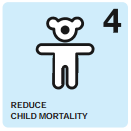
Target: Reduce by two thirds, between 1990 and 2015, the under-five mortality rate
Where are we?
Worldwide, the mortality rate for children under five dropped by 41 per cent—from 87 deaths per 1,000 live births in 1990 to 48 in 2012. Despite this enormous accomplishment, more rapid progress is needed to meet the 2015 target of a two-thirds reduction in child deaths. Children are also at greater risk of dying before age five if they are born in rural areas or to a mother denied basic education.
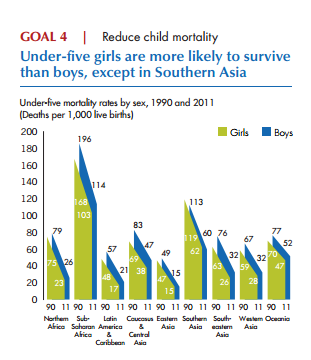
Physiologically, boys are less likely to survive than girls. Still, Southern Asia provides exceptions to this trend as mortality rates still reflect practices related to son preference in some countries.
UN Women’s efforts:
UN Women works with partners to prioritize care of mothers. Adequate nourishment and care during pregnancy and childbirth could prevent three of the four million infant deaths in the first four weeks of life.
UN Women works to ensure that women’s voices and concerns are reflected in budgetary planning processes, including for health and education programmes that respond adequately to their needs and to those of their children. A mother’s education is a main determinant of child mortality. Studies show better-educated women space childbirths over longer periods, ensure their children are immunized, are better informed about children’s nutritional needs, and adopt improved sanitation practices. Literate mothers are more likely to bring sick children for treatment at an earlier stage and seek medical services. All of these practices lower infant and child mortality rates.
UN Women also focuses on fighting discrimination against girls– which can include female infanticide and systematic neglect. Working with UN Partners, UN Women focuses on changing attitudes and laws to address this practice. More commonly, unequal sharing of food and resources fuels higher under-five death rates for girls than boys.
Ensuring equitable access for the most vulnerable women and girls to health services is also key to bringing down child mortality. Particularly vulnerable groups, such as girls who live away from their parents or who are out of school as well as women and girls who have recently migrated to cities or are domestic workers, often fall outside the attention of social service delivery and protective social networks and must be targeted to reduce child mortality.
On the ground:
Dying to live: the gender dimension of child mortality in India
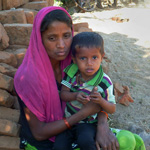
Sharing the voices of Indian women, a new UN Women report details work towards meeting MDG targets and sheds light on the issue of female infanticide, son preference and violence against women. Read more »
Breaking the silence on violence against indigenous girls: UN report calls for urgent action
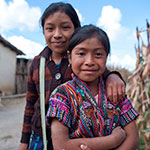
A new study launched during the XII Session of the UN Permanent Forum on Indigenous Issues, reveals that indigenous girls have a greater risk of experiencing violence due to the multiple and intersecting forms of discrimination they face. Read more »
Rural Women Take on a New Role in Delivering Services in Tajikistan

A programme to improve access to social protection in rural areas is creating Women’s Watch Groups, which monitor the situation of the most vulnerable households. We bring you the story of Savrukhon Kholmatova, who had to care for her own four children and three orphaned disabled nieces and nephews. Read more »
MDG 5 – Targets include:
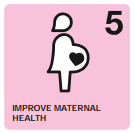
- Reduce by three quarters the maternal mortality ratio
- Achieve universal access to reproductive health. Inadequate funding for family planning is a major failure in fulfilling commitments to improving women’s reproductive health
Where are we?
Globally, the maternal mortality ratio declined by 47 per cent over the past two decades, from 400 maternal deaths per 100,000 live births in 1990 to 210 in 2010. All regions have made progress, but meeting the MDG target of reducing the ratio by three-quarters will require accelerated interventions.
Although the unmet need for family planning declined in all regions between 1990 and 2013, in 2013 an estimated 140 million women who want to stop or delay childbearing do not have access to family planning. By 2015, total demand for family planning among married women is projected to grow to more than 900 million, mostly due to population growth – an indication of the unfinished agenda in reproductive health and the scale of efforts needed to keep pace.
According to the Secretary-General's report on gender and the MDGs, based on current trends, this is one of the targets that is likely to be met last. It says that one key factor limiting progress on Goal 5 is the lack of attention to the drivers of maternal mortality and poor maternal health. As a consequence, accelerating progress on Goal 5 requires a broader approach that focuses on sexual and reproductive health and rights and women’s and girls’ right to health.
UN Women’s efforts:
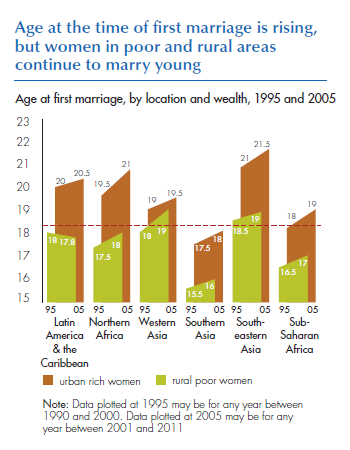
Women’s empowerment is a prerequisite to forward progress on this stalled goal.
UN Women works to end practices that bring danger to mother and child. Child marriage, female genital cutting, dietary restrictions, and all other forms of violence and discrimination against women must end if maternal mortality is to be reduced. Early marriage has an important bearing on women’s autonomy and reproductive health.
Girls who marry young have fewer opportunities to go to school, less say in household decision-making, and are more likely to experience domestic violence. They are exposed to the risks of early pregnancy and childbirth, the leading cause of death for girls aged 15 to 19 in developing countries.
Women die for lack of family planning, inability to negotiate the number and spacing of their children, lack of money to pay for transport to and for skilled birth attendance or emergency obstetric care, and from violence. One in three maternal deaths related to pregnancy and childbirth could be avoided if women who wanted effective contraception had access to it. Evidence further shows that in societies where men traditionally control household finances, women’s health expenses are often not a priority. UN Women works to ensure women’s greater decision-making and position in families and societies, so that they can have more access and voice in issues such as healthcare as well.
UN Women also seeks to increase the share of women in decision-making positions in the health sector. Women at all levels of health services can make sure the specific health needs of women and girls are not neglected, can ensure attention to local health care provision, the front line providers of health care to most women, and can help to redress inequalities in health outcomes and access that exist in every region.
On the ground:
Syrian women refugees face forced early marriages and restricted mobility: UN Women report

UN Women launched a study on violence and a programme for Syrian women refugees who have fled to neighbouring Jordan. The programme aims to increase their access to comprehensive, life-saving protection including health, psychosocial and legal services. Read more »
Ensuring mothers do not die when giving life

A programme in seven countries advances efforts to reduce maternal and child mortality highlighting the links between violence against women and maternal health, and training midwives and community health workers to bring long-term change. Read more»
Through film and life, rural women address poverty and early marriage in Egypt

An innovative workshop explores ways for rural women how to tell their own stories about their participation in agriculture and barriers to their development in Upper Egypt, which include child marriage. Read more »
MDG 6
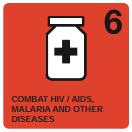
- Halt and begin to reverse the spread of HIV/AIDS
- Achieve, by 2010, universal access to treatment for HIV/AIDS for all those who need it
Where are we?
The incidence of HIV is declining steadily in most regions; still, the number of women living with HIV has been increasing globally since 2001. According to the latest UN AIDS report 2.3 million people were newly infected in 2012. And HIV remains the leading cause of death for women of reproductive age worldwide. Every minute, a young woman is infected with HIV. Globally young women 15 to 24 years of age have a 50 per cent higher risk of becoming infected with HIV compared to their male peers. Young women are more vulnerable to HIV infection due to a complex interplay of physiological factors and gender inequality. Because of their low economic and social status in many countries, women and girls are often at a disadvantage when it comes to negotiating safer sex and accessing HIV prevention information and services.
By the end of 2012, some 9.7 million people in low- and middle-income countries were accessing antiretroviral therapy, an increase of nearly 20 per cent in just one year, which comes on top of similar gains in previous years. The 2010 target of universal access, however, was not reached.
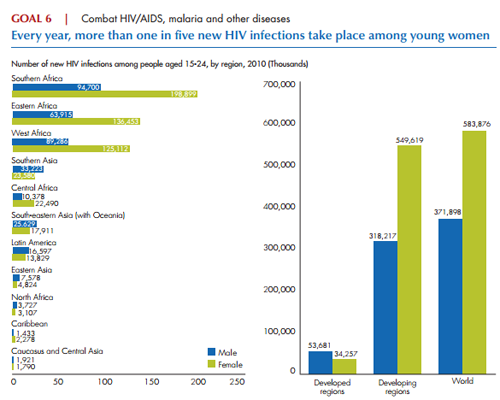
UN Women’s efforts:
UN Women is working with governments on enactment and enforcement of legal measures against discrimination that drives the spread of HIV and AIDS among women and girls. Efforts focus also on measures that address gender-based violence, which perpetuates the spread of AIDS. Rape, trafficking of women, forced marriage, and sexual exploitation of women and girls in situations of conflict are all recognized as significant risk factors for HIV transmission. UN Women also supports women and girls living with HIV and advocates for their leadership and full participation policies that affect them.
UN Women advocates equality in society, including marriage and family relations. Gender equality is the foundation by which girls and women acquire negotiating power, confidence, and information to insist on safe sex in marriage and to be an equal partner in family planning decisions. Resources must be directed to the needs of the most vulnerable populations, which in many cases are adolescent girls and young women. Working with men and boys to fight violence against women and the spread of AIDS, is also part of the efforts. Women’s greater economic independence can reverse the spread of AIDS and other epidemics through increasing women’s self-esteem, negotiating power and reducing women’s vulnerability to being sexually exploited.
Caring for sick family members is seldom paid, rarely recognized, and most often done by women. Women, who are more likely to be employed in jobs with little sick leave and other benefits than men, pay a heavy price in terms of lost labour and skills-building opportunities, overwork, and less time for other responsibilities. And for women who are at home full-time looking after their family members, the burden of care prohibits not only seeking paid opportunities, but also any other activities, such as seeing a doctor for their own medical issues, and other such necessities.
On the ground:
Congolese refugees living with HIV forge ahead, gaining independence
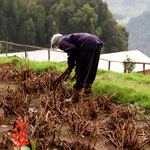
Women are cultivating mushrooms and tomatoes, learning about business and agriculture and pooling their funds along with combating social stigma and confronting gender-based violence. Read more »
Cambodian women get a fresh start
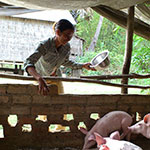
More than 1,300 poor women have received home-based care, skills-training and grants to start their own businesses through a Fund for Gender Equality programme. Read more »
Activists fight for the rights of HIV-positive women living in Peru

After contracting HIV and losing her son to the disease, Guiselly Flores became an activist. As the Director of the Peruvian Network of Women Living with HIV (RPM+), over the last 15 years she has been a staunch rights advocate. Read more »
MDG 7 – Targets include:
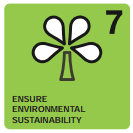
- Integrate the principles of sustainable development into country policies and programmes; reverse loss of environmental resources
- Reduce by half the proportion of people without sustainable access to safe drinking water and basic sanitation
Where are we?
Global emissions of carbon dioxide (CO2) have increased by more than 46 per cent since 1990. Containing the growth in global emissions demands bold, coordinated, national and international action. Efforts are ongoing to strengthen national mitigation efforts under the Climate Change Convention and its Kyoto Protocol.
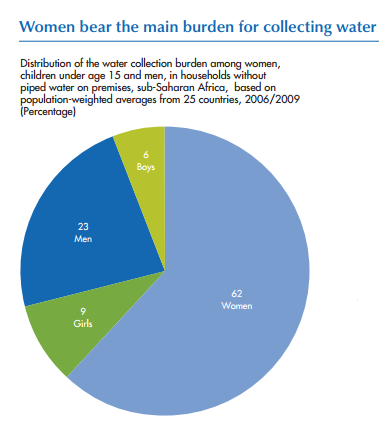
The MDG target of halving the proportion of people without sustainable access to safe drinking water has been achieved five years ahead of schedule. Despite unprecedented progress, 768 million people still drew water from an unimproved source in 2011. Most of them were poor people in rural areas. Where water sources are not readily accessible, women and girls often bear the burden of collection and must walk long distances to satisfy household needs.
In 1990, just under half (49 per cent) of the global population had improved sanitation. Coverage must extend to 75 per cent to meet the target, up from the current level of 64 per cent. Access to sanitation is important for women’s safety and dignity. According to the Secretary-General’s latest report, the missing gender dimension of this target risks neglecting the specific needs of women and girls in sanitation policies.
UN Women’s efforts:
UN Women works with Governments on development policies and programmes that both respond to the needs of women and are sustainable. This includes promoting gender-responsive budgeting and measures to improve access to safe drinking water for women, who are most often the primary users, providers, and managers of water in rural households, and the guardians of household hygiene. With improved access to safe drinking water, women have more time to earn income, girls are more likely to attend school, family health and hygiene are improved, and women suffer less from the burden of carrying heavy loads.
UN Women works on reforming policies for equitable property and resource ownership. Without title to land, women are often denied access to technologies and resources– such as water resources, irrigation services, credit, extension, and seed– that strengthen their capacity to manage natural resources (of which they are often the primary users as farmers and household managers) in a more sustainable manner.
UN Women advocates for gender equality and women’s empowerment in mitigating and adapting to climate change, and achieving equitable and inclusive sustainable development. Women are disproportionately affected by extreme weather resulting from climate change and their voices must be included, both in household and political decision-making. UN Women is a part of global climate change negotiations and maintains active outreach to ensure that decisions incorporate gender equality, women’s rights and women’s contribution in climate change mitigation and adaptation.
On the ground:
Tanzanian women bring safe drinking water to their communities

In the Kingolwira village in Tanzania, where water is scarce, women’s leadership and the community-wide construction of a small dam is now ensuring an equitable distribution of clean water. Read more »
Latin American and Caribbean women chart their priorities for the new global development agenda

To give women more voice in the post-2015 development agenda, UN Women has organized various consultations globally. A look at one which took place in the Americas and the Caribbean, to bring forth the priorities of the region. Read more »
Women need safe, private toilets
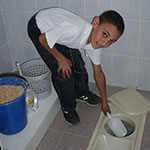
UN Women partners with Women for Water Partnership to promote good practices of women’s leadership in achieving the internationally agreed goals for water and sanitation. This involves supporting women’s networks to sensitize communities and training women to build toilets in their homes. Read more »
MDG 8 – Targets include:
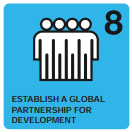
- Develop further an open, rule-based, predictable, non-discriminatory trading and financial system
- In cooperation with the private sector, make available the benefits of new technologies, especially information and communications
Where are we?
In 2012, net official development assistance (ODA) from developed countries stood at $125.6 billion, representing 0.29 per cent of donors’ combined gross national income. This is a 4 per cent drop in real terms from 2011, which was 2 per cent below the 2010 level. On the bright side, aid is increasingly addressing gender issues. Between 2002 and 2011, the share of bilateral sector-allocable aid in support of gender equality remained relatively stable, starting at 27 per cent in 2002 and rising to 35 per cent in 2011. However, in 2011, only 5 per cent of total bilateral sector-allocable aid went to programmes making gender equality its principal objective.
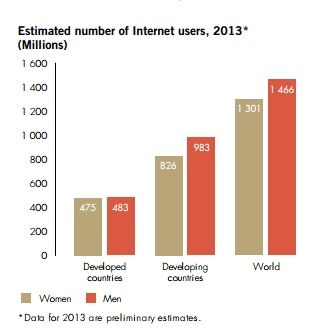
With a projected 6.8 billion mobile-cellular subscriptions by the end of 2013, global penetration (measured as the number of subscriptions in relation to total population) will reach 96 per cent. But women are on average 21 per cent less likely to own a mobile phone.
By the end of 2013, an estimated 2.7 billion people will be using the Internet, which corresponds to 39 per cent of the world’s population. Still, while more and more people are joining the information society, more men than women are using the Internet. Globally, 37 per cent of all women are online, compared to 41 per cent of all men. The gender gap is more pronounced in the developing world, where 29 per cent of women use the Internet, compared with 33 per cent of men.
UN Women’s efforts:
Because of the cross-cutting nature of women’s empowerment for all the MDGs, assistance to gender programmes should be increased in order to pave the way for attainment of the MDGs, from allocation of resources for women’s economic empowerment to ending violence against women, a pandemic of huge proportions, which is not only a gross human rights violation, but also which hampers development and growth.
To advance gender equality and the inter-linked gender dimensions of all the MDGs, UN Women has been working with partners to train women and girls in the use of ICT as a tool for education and economic empowerment.
On the ground:
In Rio de Janeiro’s favelas, a new online tool tackles violence against women and girls

Using cell phones and Internet cafés in 10 favelas of Rio de Janeiro, women and girls are accessing information about the services of a network for tackling violence – whether psychological, economic, physical or sexual – and training their peers. Read more »
Closing the science and technology gender gap in the Dominican Republic

Overcoming stereotypes, promoting interest in mathematics among girls, and eventually reducing the gender digital divide in the Dominican Republic is the objective of the project Gender and ICTs: Equality and Equity in E-Dominican, supported by the UN Women’s Fund for Gender Equality. Read more »
A call for women: companies join efforts to end violence and empower women

Assisting acid attack survivors in Bangladesh and incorporating mass communications to combat violence against women in Turkey, we profile some of the more than 500 private sector companies around the world that have signed the Women’s Empowerment Principles. Read more »
What comes after the MDGs target date of December 2015?
Find out more about UN Women's work to ensure gender is included as a stand-alone goal and mainstreamed across all future goals in the post-2015 development agenda.